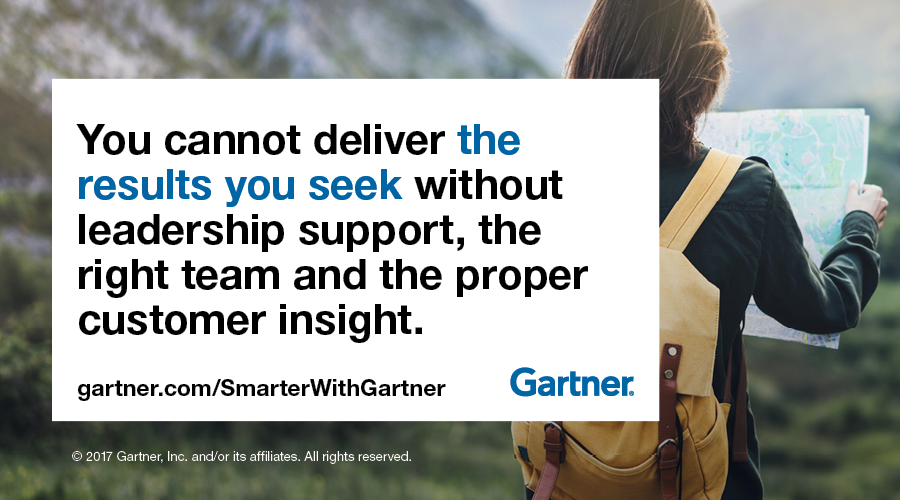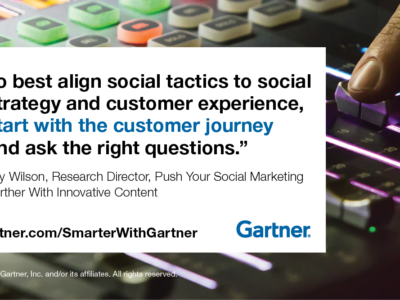Leverage collaboration and data to fuel effective customer journey mapping.
When looking for pain points in the customer journey, one airline discovered it was difficult for frequent flyers to find open dates when their initial departure date was unavailable. The enterprise used data and journey maps to identify where and how customers were frustrated. By addressing customer annoyance, the airline lifted its Net Promoter Score (NPS) and frequent flyer redemptions. A data-driven, insight-oriented customer journey mapping process such as this is critical to ensure the map drives customer experience improvements.
“The most powerful journey maps are produced when the right leadership support is provided, the appropriate people are involved and the necessary data is analyzed,” said Augie Ray, research director, Gartner for Marketers.
Set up for success
Effective journey mapping processes include an outside-in customer-centric perspective, executive commitment and a focus on insight. The key to success is to give early attention to collaboration and data capture; without these, efforts risk being check-the-box exercises that no one acts on.
Collaborate to build consensus and commitment
You cannot deliver useful results without leadership support, the right team and the proper customer insight. The real end goal is objective, data-driven consensus and commitment, not pretty graphic representations of customer journeys. Unanimity across silos about the key customers your organization serves, their needs and journeys, and the common problems that require attention and investment is critical. A journey map without broad organizational consensus is merely a perspective, while a journey map with cross-organizational support is an action plan. Set the stage for successful collaboration with these steps:
- Obtain executive sponsorship
- Secure broad leadership support
- Build a team
- Set expectations
Inform your map with data, not opinion
A robust journey mapping process is not an exercise in writing collective fiction. Many journey mapping exercises erroneously have participants “imagine” a journey for a customer. Build the journey map on data and insight instead. Data provides a solid foundation to develop an accurate journey map and helps increase collaboration. Let data be your guide to gain consensus when conflict arises from incompatible, cross-functional viewpoints. Gather data from many sources, including:
- Direct feedback surveys such as relationship, transactional or special purpose survey
- Indirect feedback such as text, speech and interaction analytics for customer care calls
- Operational data from CRM systems, call center software and marketing analytics to infer customer perceptions
- Market research such as marketing department studies gathered to define and understand the target audience
- Qualitative research including focus groups, online research communities and ethnographic research
Inventory the types of data that help enable the mapping exercise and resolve any information gaps. “Recognize that data analysis and cross-organizational collaboration are as much a benefit as they are part of the process,” said Mr. Ray.
Get Smarter
Client Research
Gartner for Marketers clients can read more in How to Manage Effective Customer Journey Mapping Processes by Augie Ray.
Map the Customer Journey
Access Mr. Ray’s Buy, Own, Advocate model for a framework to help you map the customer journey.
Gartner Digital Marketing Conference 2017
Hear more about digital marketing trends at the Gartner Digital Marketing Conference 2017, May 10-12, in San Diego, CA. Follow news and updates from the event on Twitter using #GartnerDMC.










